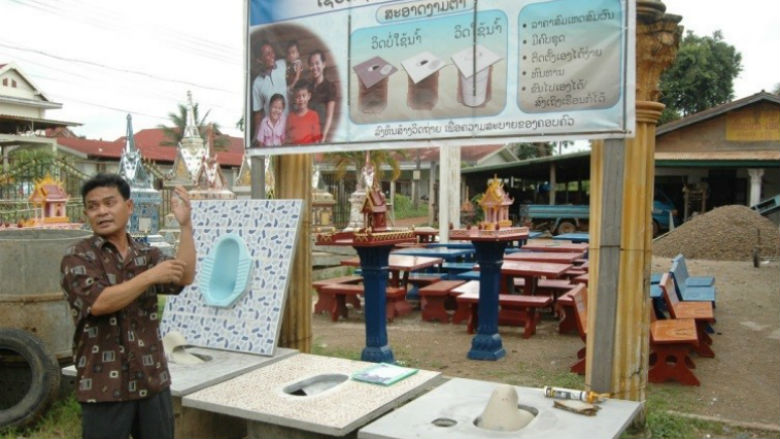Key Findings
Lao PDR has met the Millennium Development Goal target of 54% access to improved sanitation but more than half of the rural population are without access.
- Urban access to sanitation facilities has increased from 66% in 2000 to 94% in 2015
- Rural access to sanitation facilities is catching up, increasing from 17% in 2000 to 56% in 2015
- Lao PDR has the second-highest level of open defecation in the region, after Cambodia
- Almost 49% of rural children and 61% of the poorest children were stunted in 2011. Research indicates that practicing open defecation has negative impacts on health, especially for young children
- Estimated economic losses due to poor sanitation in Lao PDR is $193 million per year, or 5.6% of the country’s GDP
Supported by the World Bank, Lao PDR is making efforts to scale up rural sanitation and hygiene.
- The Community-Led Total Sanitation (CLTS) approach combined with sanitation marketing tools in 266 villages led to a 32% increase in sanitation access, 8 times faster than the national rural average of 2.6% per year from 2014 to 2016
- The CLTS manual and sanitation marketing tools were adopted by the Government and integrated into teaching curriculums with 469 provincial and district levels trained on sanitation topics
- 113 villages were declared open defecation free and almost 40,000 people gained access
- Partnership with the private sector helped simplify latrine purchase for households
To meet the national access target of 80% by 2020, over 200,000 people would need to gain access annually from 2017 to 2020. The report provides recommendations to achieve this:
- Develop a national rural sanitation sub-program with a dedicated budget line under the Ministry of Health. This translates into a minimum budget requirement of $2.3-2.8 million annually
- Integrate the rural sanitation program with the Government’s nutrition programs to maximize the increased funding for nutrition from donors
- Mobilize high-level support and funding commitment through the Poverty Reduction Fund to scale up sanitation service delivery in the most remote and poorest districts
